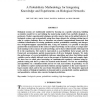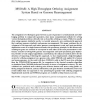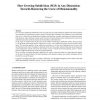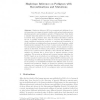699 search results - page 129 / 140 » The method of combinatorial telescoping |
JCB
2006
13 years 8 months ago
2006
Biological systems are traditionally studied by focusing on a specific subsystem, building an intuitive model for it, and refining the model using results from carefully designed ...
JCB
2007
13 years 8 months ago
2007
The assignment of orthologous genes between a pair of genomes is a fundamental and challenging problem in comparative genomics, since many computational methods for solving variou...
CGF
2002
13 years 8 months ago
2002
In recent years subdivision methods have been one of the most successful techniques applied to the multi-resolution representation and visualization of surface meshes. Extension t...
AMAI
1999
Springer
13 years 8 months ago
1999
Springer
Logic programming with the stable model semantics is put forward as a novel constraint programming paradigm. This paradigm is interesting because it bring advantages of logic prog...
WABI
2010
Springer
13 years 6 months ago
2010
Springer
Abstract. Haplotype Inference (HI) is a computational challenge of crucial importance in a range of genetic studies, such as functional genomics, pharmacogenetics and population ge...




